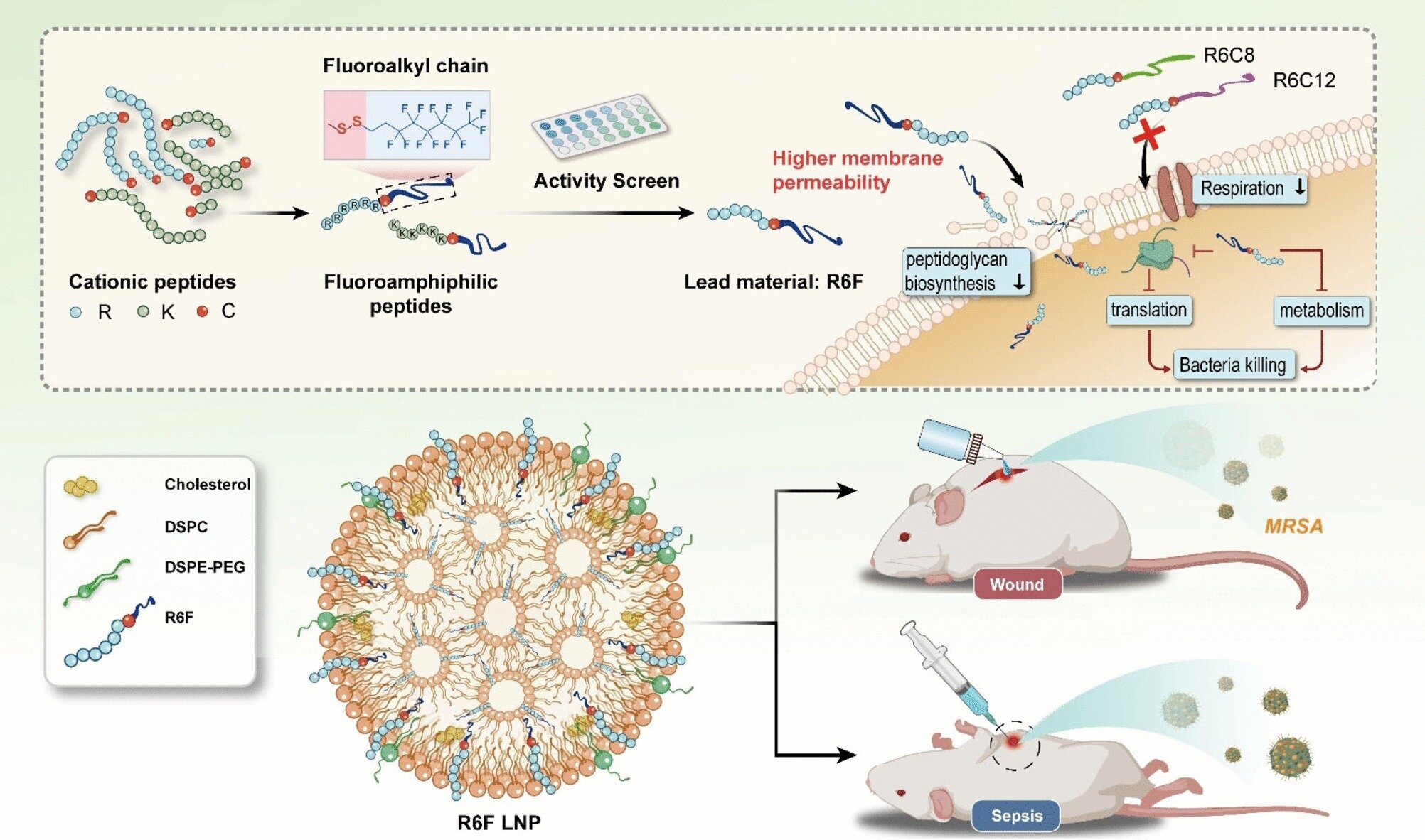Fluorous lipopeptides act as highly effective antibiotics for multidrug-resistant pathogens
Date: 8.4.2024
Lipoproteins, small protein molecules with fatty acid chains, are widely used by bacteria in their battles against microbial competitors. A number of lipoproteins have already been approved for use as drugs.
 The team led by Yiyun Cheng at East China Normal University in Shanghai aims to amplify this effect by replacing hydrogen atoms in the lipid chain with fluorine atoms. These make the lipid chain simultaneously water-repellant (hydrophobic) and fat-repellant (lipophobic). Their particularly low surface energy strengthens their binding to cell membranes while their lipophobicity disrupts the cohesion of the membrane.
The team led by Yiyun Cheng at East China Normal University in Shanghai aims to amplify this effect by replacing hydrogen atoms in the lipid chain with fluorine atoms. These make the lipid chain simultaneously water-repellant (hydrophobic) and fat-repellant (lipophobic). Their particularly low surface energy strengthens their binding to cell membranes while their lipophobicity disrupts the cohesion of the membrane.
The team synthesized a spectrum (substance library) of fluorous lipopeptides from fluorinated hydrocarbons and peptide chains. To link the two pieces, they used the amino acid cysteine, which binds them together via a disulfide bridge.
The researchers screened the molecules by testing their activity against methicillin-resistant Staphylococcus aureus (MRSA), a widespread, highly dangerous strain of bacteria that is resistant to nearly all antibiotics. The most effective compound they found was "R6F," a fluorous lipopeptide made of six arginine units and a lipid chain made of eight carbon and 13 fluorine atoms. To increase biocompatibility, the R6F was enclosed within phospholipid nanoparticles.
In mouse models, R6F nanoparticles were shown to be very effective against sepsis and chronic wound infections by MRSA. No toxic side effects were observed.
Image source: Hu et al. (2024), Angewandte Chemie International Edition.























